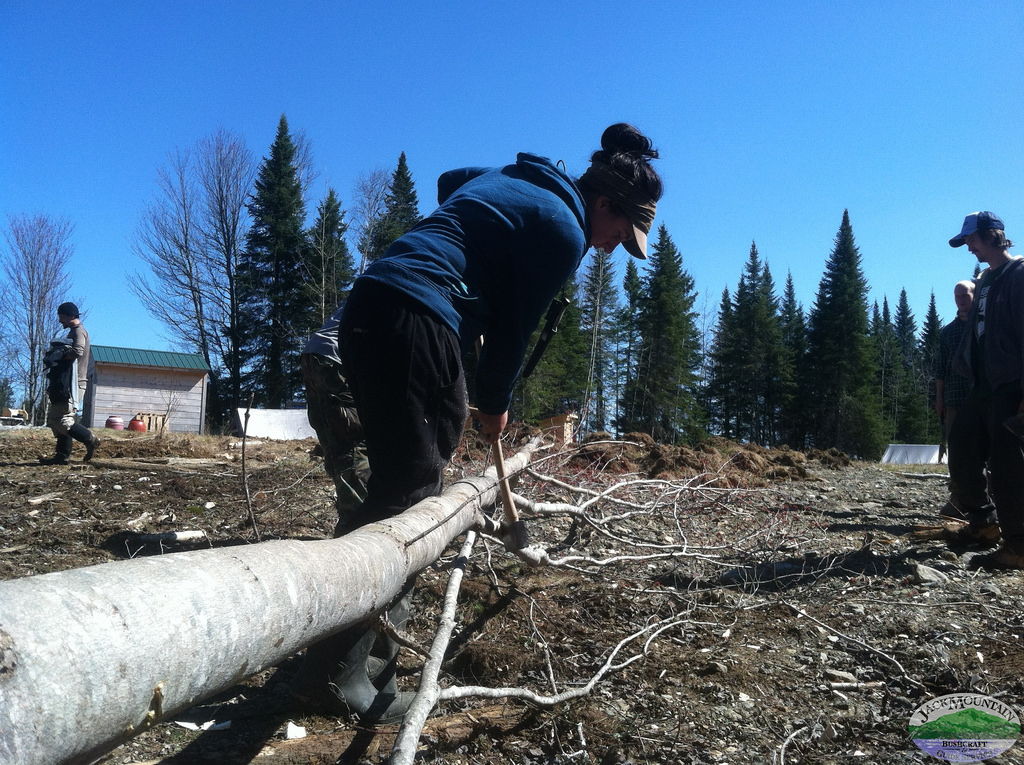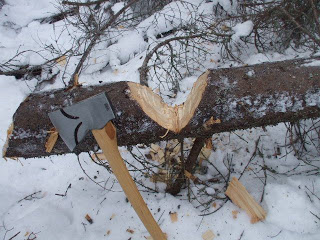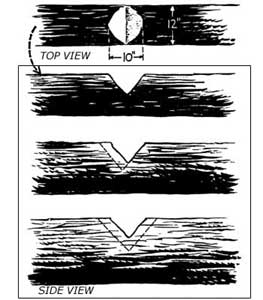How Can We Help?
Limbing is the process of removing branches from the stem of a fallen tree. Bucking is the process of cutting a felled and delimbed tree into logs. Bucking is often used to remove trees that have fallen across trails.
Safety
Before proceeding with any limbing or bucking activities, it is extremely important to evaluate the conditions. Never start until you are aware of the hazards and are prepared to deal with any changing situations that could be brought on by your work. For example:
- The tree may have fallen across another small tree creating a "spring pole" that could spring out and strike you when tension is released.
- The tree might be supported on other limbs or otherwise suspended in the air.
- The tree might resting on a slope. If supporting limbs and tension are released, it could slide or roll onto you or others.
- Limbs themselves might be bent and under tension from the ground. Released tension from other limbs or the limb you are cutting, could cause it to snap and/or whip or strike you and others.
You'll also be using sharp tools. So it's important that any time you work with these tools you follow the Woods Tools Safety Rules.
Limbing
- Keep both hands on the handle to reduce the risk of slipping or making a wrong cut. Place one hand further up the handle and then let it slide down the handle as the axe is swung downward.
- Always stand so you have the log between you and the branches you are removing. This reduces the risk of cutting into your leg if you slip.
- Minimize your hazards while cutting by checking that there are no small branches or anything else in the path of the axe. Clear any hanging branches that might deflect the swinging axe. Stand firmly on the ground and never balance on logs or branches.
- When limbing, strike the underside of the limb where it joins the trunk. As result, you will progress from the bottom to the trunk to the top.
 |
 |
Bucking
Often it is necessary to chop a large log while standing on the ground. The most common mistake is to make the V-notch too small. If the notch is too small the cut becomes pinched in the middle of the V-notch before you reach the center of the log. If a very large log is bucked, you need to make your notch narrow and then widen it out; the chips won't clear if you start the notch much wider than 10 to 12 inches. You must make a very large V-notch to chop all the way through from just one side. You also risk hitting your cutting edge on a rock as you finish the cut.
To start bucking, make three forehand swings, high, low, and middle, followed by three backhand swings. Your first swing should strike high at the top of the log; the second at the bottom of log; and the third right in the middle. If you follow any other sequence, the ax will stick in the wood. The last stroke, stroke number six, throws the chip on the ground.
 |
 |
Video Examples
| Limbing and Bucking | Bucking
|
Sources:
- http://extension.missouri.edu/p/g1958
- http://www.survivalprimer.com/Homestead/Logging_Felling_&Bucking.pdf
- http://www.fhwa.dot.gov/environment/recreational_trails/publications/fs_publications/99232823/page20.cfm
- http://www.gransforsbruk.com/en/using-an-axe/felling-and-limbing/
- https://en.wikipedia.org/wiki/Limbing
